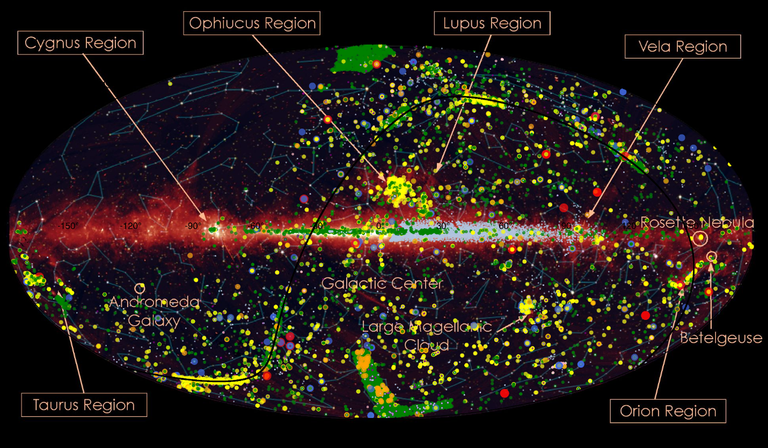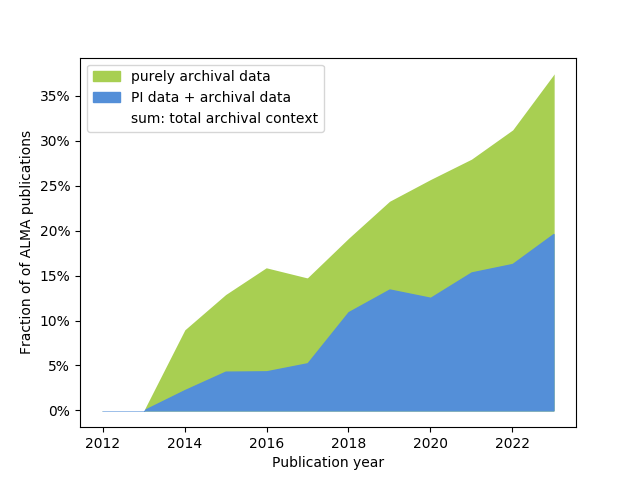Over one third of all ALMA publications now make use of data from the ALMA Science Archive
Over the past 10 observational cycles, the ALMA Science Archive (ASA) has amassed an enormous volume of data. This extensive collection stands as a promising resource to the continual growth of archival science. With over 1.8PB of accumulated data and nearly 70,000 observations, the ASA now boasts extensive sky coverage in capturing a vast number of research topics (Figure 1), offering researchers unparalleled opportunities for archival science. The worldwide astronomy community has an ever-growing opportunity to leverage ALMA's extensive archive for their research. Notably, 13% of all publications in Nature involve the use of archival data, with 9% relying exclusively on such data.

Figure 1 shows public ALMA observations overlaid on the AKARI (Far-IR) all-sky map. The ALMA sources, represented by circles, are color-coded based on ALMA receiver bands: light blue for band 3, purple for band 4, pink for band 5, yellow for band 6, green for band 7, orange for band 8, blue for band 9, and red for band 10. Image credit: JAXA-ESA/PY. Hsieh.
In a remarkable milestone for the astronomy community, the utilization of ALMA archival data has become a driving force in research publications. In 2023, publications making use of either purely archival data (green) or archival data combined with data associated with one of the authors (PI data, blue) accounted for an impressive 37.7% of all ALMA publications (Figure 2, science verification data (SV) were excluded from the statistics). These papers are not only numerous but impactful, with approximately 23% of all citations coming from papers that make use of archival data.
Figure 2. Stacked area graph showing the percentage of publications making use of either purely archival data (green) or archival data combined data associated with one of the project authors (blue).
If you have any questions or comments about using archival ALMA data or how to get support to work on such data, please contact your local ALMA Regional Centre via the ALMA Helpdesk.
